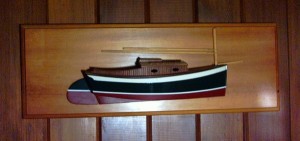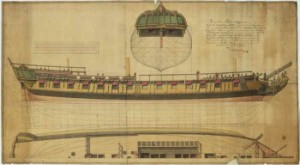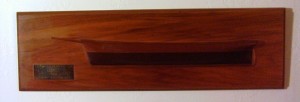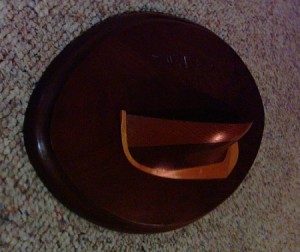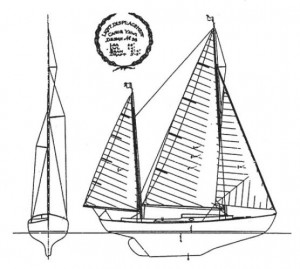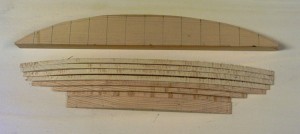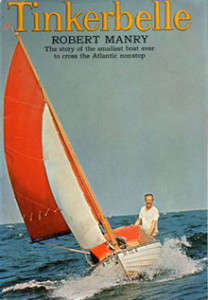In the Spring of 1993 I took a Cruise of several days in my 23 foot sloop Dragonsong. It was a needed break in a heavy schedule of working full time and going to Community College part-time. In those days sleep was optional, as available. This entry was written in retrospective at the end of a long day. This is my natural environment, swinging on the hook with the oil lamps glowing, a hot drink cup of coffee and maybe the radio keeping me company. I am a hopeless escapist.
May 20, 1800 EST: Departed Rhode River Marina, Edgewater, Maryland .
I slept in this morning so I got out the door later than I wanted to for the three hour drive to the boat. I got in the mood to play tourist in Annapolis. The Nature Store, Fawcett’s incredible marine store, and some very interesting vessels at dockside. This is to be my beginning of the season shake-down cruise. The mission profile is simply to cross the Chesapeake Bay to St. Michaels and satisfy my craving for a chocolate milk shake at Justine’s. Not exactly the Holy Grail or Golden Fleece but still a worthy goal for a worn out scholar.
When I finally meandered over to Rhode River Marina I found it necessary to do some extra chores, such as, sort out the wiring for the cabin and running lights. I don’t like to go out unless I’m sure that I can see and be seen should I be on the water after sundown.
I shoved off about 6:00. I feel like I’ve slipped into island time but i don’t mind a bit. Hey who needs schedules and clocks and all that crap anyway. The wind was fair for Eastern bay but a bit light all the way to Bloody Point. The tide slowed things down a bit and it soon became apparent that this would finish up as a moonlight sail. As evening set in the wind came up nicely to hurl Dragonsong through the dark at what seems like break-neck speed as we played connect the dots on the map by following flashing red and green lights. Because of the darkness I played it safe and went the long way around the shoal at the confluence of the Miles and Wye Rivers.
May 21, 0100 EST: At anchor, Shaw bay, Wye East River.
Late into the night seems to be my normal schedule whether I’m studying for classes or escaping the grind by going sailing. Now I sit here tired and happy, anxious for the morrow and the promise of chocolate delight. Seems like a silly subject for a quest on mighty waterways. Maybe it’s not the milk shake as much as how I got to it that makes all the difference.
Swinging on the hook is all about the feeling of contentment to be had in a self-contained world. The area offers folk music programing on the FM radio from Washington D.C. and Easton, MD. So my ears are treated to good music which will season the atmosphere during my dinner. Beef stew tastes pretty good at 1:00 A.M. especially if you augment Dinty Moore’s recipe a little bit. I threw in a dash of tomato sauce and a dollop of Lowenbrau to give it a taste of sin. I think I will save demon rum for tomorrow night.
So ends this day




